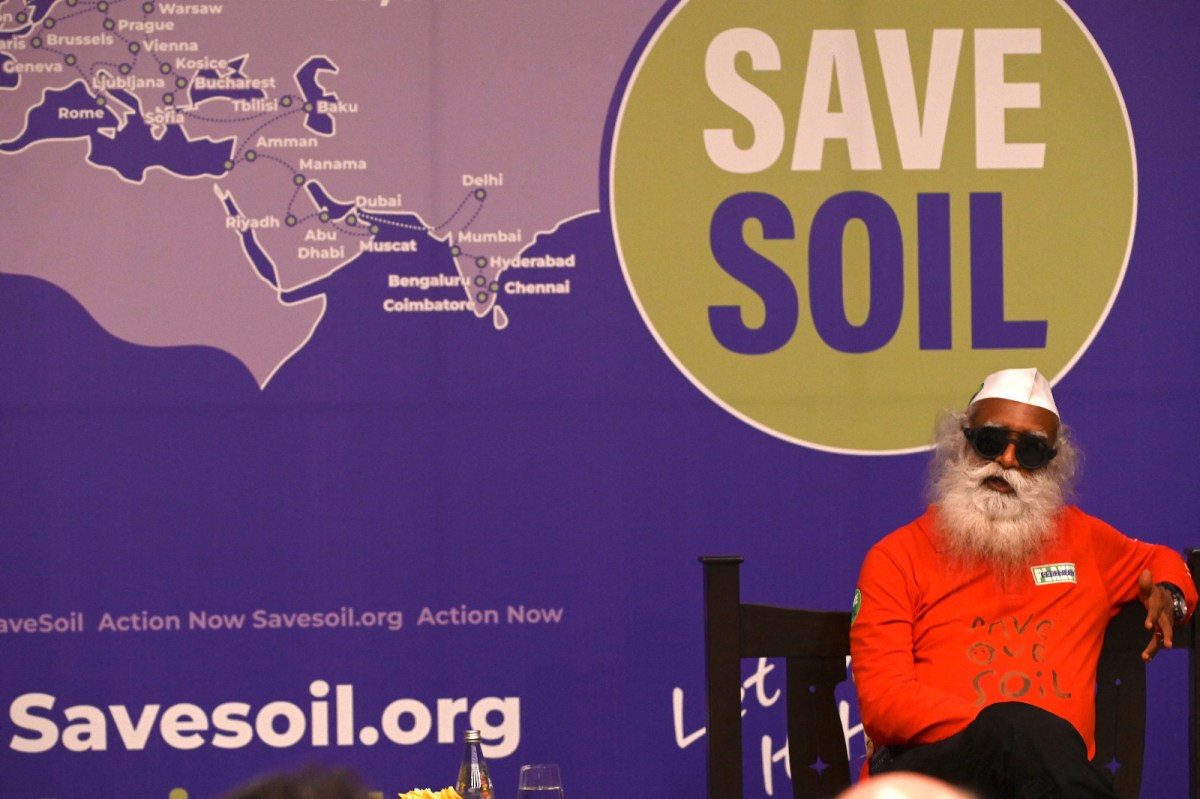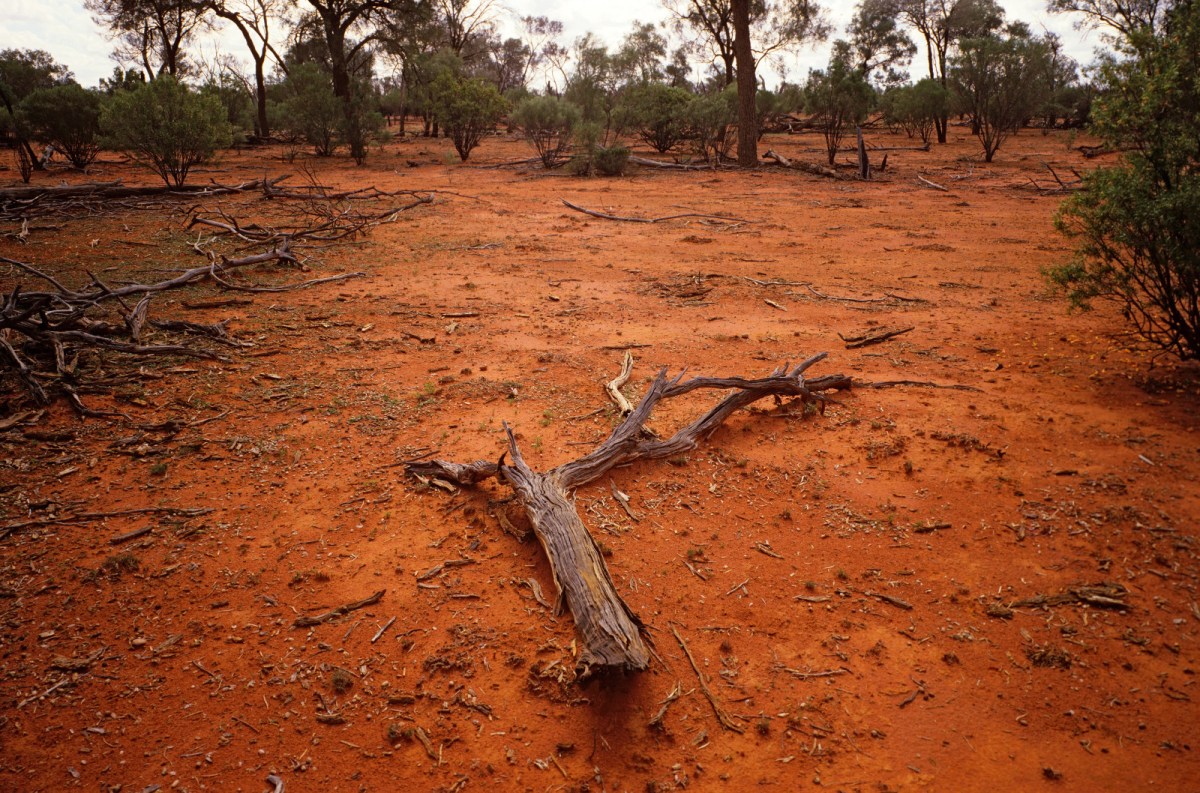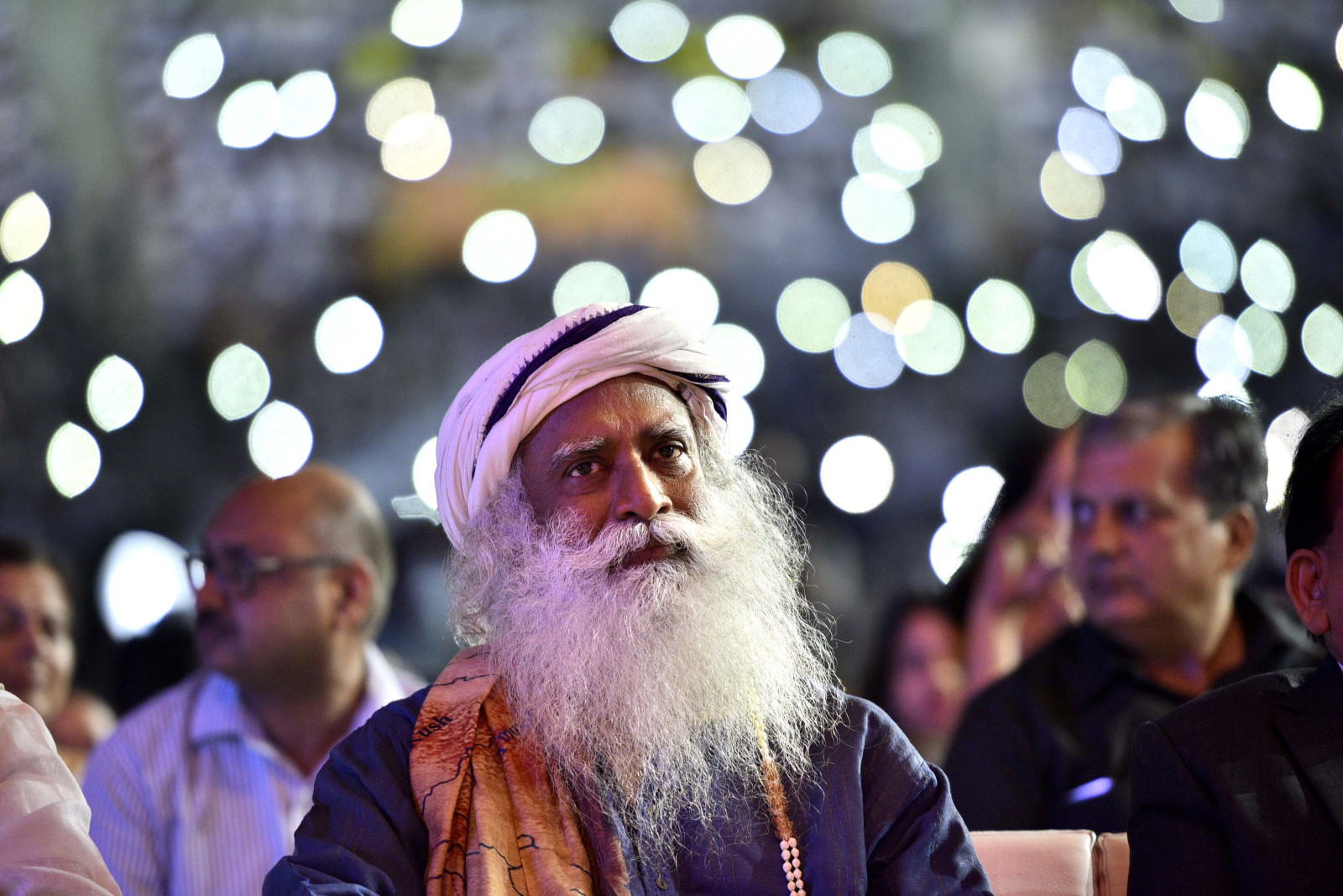On a clear, bright day in March, a few dozen people gathered in Parliament Square in central London, many of them wearing green T-shirts and carrying signs emblazoned with the words “Save Soil.” They were there to see an Indian spiritual leader named Sadhguru, who was about to set off on a 13,000-mile motorcycle journey through Europe, the Middle East, and India in a bid to raise awareness of a growing problem: the widespread loss and degradation of the world’s soils.
In front of a statue of Indian independence leader Mahatma Gandhi, flanked by members of the British Parliament and India’s high commissioner to the United Kingdom, Sadhguru proclaimed that the future looked grim: Without healthy soil, it would become increasingly difficult to grow food, an issue he’s previously warned would lead to mass starvation and civil war. But now, he said, humanity has a chance for redemption, if people all around the world call on their governments to protect soil.
“Soil is one aspect where everybody has to come together, because all of us come from the same soil, live upon the same soil, and go back to the same soil,” he told the listening crowd, and more than 100,000 people watching the event live on YouTube. “The question is only, do we get this point now, or when we are beneath the Earth?”
The world, in some sense, appears to be listening. In February, the United Nations’ World Food Programme agreed to collaborate with Sadhguru’s Isha Foundation, the umbrella organization for the Save Soil movement, on “conversations, awareness, and outreach” around soil and food security in India. Sadhguru has addressed world leaders at the annual meeting of the UN Convention to Combat Desertification in Ivory Coast and the World Economic Forum in Davos, Switzerland. His most popular video on the Save Soil movement has been viewed more than 5.6 million times on YouTube.
But as the campaign has gained traction worldwide, it’s also attracted criticism for its vague methodology and singular focus on the physical characteristics of soil, to the point of excluding larger, more systemic issues like climate change and the industrialization of agriculture. Activists in India have drawn attention to the Isha Foundation’s history of failed environmental campaigns and clashes with Indigenous people, while calling out Sadhguru’s ties to Hindu nationalism and authoritarian leaders like Indian Prime Minister Narendra Modi. And scientists have challenged the Save Soil movement’s policy prescriptions for reversing soil degradation, bringing the effectiveness of the campaign into question.

“It’s extremely performative,” Rohan Antony, a researcher based in India who works for global nonprofit A Growing Culture, which promotes sustainable food systems around the world. “There’s nothing really happening except everyone saying, ‘save soil.’ And whose soil? Why is the soil depleted? None of these questions are being asked.”
The stakes are high, as the 65-year-old Sadhguru, born Jagadish Vasudev, has a global audience. With his meandering anecdotes and casual turns of phrase, he strikes a balance between wisdom and relatability, a charismatic mix that’s drawn in the likes of Will Smith, Deepak Chopra, and the Dalai Lama, who have publicly praised him or appeared in promotional materials for the Save Soil campaign. He has done extended interviews with singer Demi Lovato and actor Matthew McConaughey and made appearances on The Daily Show and The Joe Rogan Experience.
But activists and politicians have accused Sadhguru, whose foundation did not respond to requests for comment from Grist in time for publication, of starting environmental campaigns to gin up publicity and donations despite having little experience with environmental work. In 2019, he led a campaign to plant trees along the Cauvery River in southern India that was questioned by activists for promoting an overly simplistic solution that might end up actually damaging the environment. Youth climate activist and Fridays for Future India founder Disha Ravi has also criticized Sadhguru for “grabbing land from Adivasis,” India’s Indigenous communities, to build the Isha Foundation headquarters in Coimbatore. Meanwhile, Indian outlet Newslaundry reported last year that the compound was built illegally in a protected elephant habitat. (The Isha Foundation has denied all these allegations.)
In launching his latest venture, the Save Soil movement, Sadhguru is bringing attention to a real problem: According to the United Nations, 52 percent of the earth’s agricultural land is “moderately or severely” degraded, a catchall term for a drop in quality that can mean soil is eroded, less fertile, or contaminated with toxic chemicals. Without major changes, a UN report released earlier this year found that an area the size of South America will become degraded by 2050, even as more food will be needed to support a population that’s expected to reach 9.8 billion that year.
Soil is being worn away much faster than it’s being replaced, said Jo Handelsman, a biologist and author of the book A World Without Soil. And the soil that’s left has been stripped of its nutrients and organic matter, making it less productive for growing crops and more vulnerable to extreme weather like flooding and drought.

“It’s a very dire situation,” Handelsman said. “I don’t think it’s hyperbolic to say that.”
But while the Save Soil movement has been clear on the impacts of soil degradation, it’s much more vague on the causes — and that’s by design. In a talk in London the day before setting off on his motorcycle journey, Sadhguru emphasized that the campaign is definitively “not a protest,” and that he doesn’t want to lay blame on anyone — corporations or individuals — for the soil crisis. “This confrontational approach to ecological and environmental solutions,” he said, “has to go.”
This big-tent strategy obscures the systemic issues that lead to soil degradation, namely the shift from small-scale, locally self-sustaining agriculture to a globalized system that relies on the cheap export of a handful of cash crops, said Antony of A Growing Culture. That transition, which is connected to colonialism and the violent seizure of Indigenous land, has also devastated small farmers in countries like India and the United States, who are either forced to give up their farms to large-scale producers or use practices that damage the soil to compete economically.
Some of those practices include a worldwide switch over the last 150 years to “modern” farming techniques like plowing, which turns over the soil and exposes it to the air, Handelsman said. That has the dual effect of drying out the earth, making it more vulnerable to erosion, and speeding up the breakdown of organic matter, which makes the soil less nutritious and releases carbon dioxide. The technological shift in farming after World War II, known as the Green Revolution, also encouraged practices like monocropping, or growing just one type of plant on an area of land — particularly high-yield, annual crops like corn and soybeans. These systems have reduced the amount of plant matter that returns to the soil; every year, farmers cut away the crops they’ve grown without leaving anything to decompose into the ground.
“It’s industrial agriculture, not small-scale, peasant agriculture, that’s ruined soil,” Antony said. “But the Save Soil movement makes it sound like the soil is just magically ruined because of our collective abuse of the environment.”
Climate change is exacerbating the issue, with extreme weather events like droughts and heavy rains alternately drying topsoil into dust and washing it away. But Sadhguru has said that he sees soil as a separate issue, telling a crowd in London the day before the sendoff event that “we are talking about climate change, carbon emissions, and global warming … but we are not addressing soil.” Depoliticizing the problem the way the Save Soil campaign does, Antony said, allows governments and corporations responsible for soil depletion to signal their support without changing their practices or making fundamental shifts like redistributing land, which he called a form of “greenwashing.”
Instead, the Save Soil movement has called for governments to pass laws that require agricultural soils to contain 3 to 6 percent organic content, which it says is the minimum for growing healthy food; in some parts of India, that number currently stands at less than 0.5 percent. It’s unclear how much success the campaign has had; while countries like Nepal and six Caribbean nations have signed agreements with Save Soil pledging to halt soil degradation on their territory, they have not yet stated how they plan to do so.
Save Soil has also drafted “a policy for soil regeneration on the planet, based on soil types, latitudinal positions, and agricultural traditions of a given nation,” though its recommendations for all nations remain oriented around the same 3 to 6 percent soil organic matter goal. Viewing the policy online also originally required users to agree to “support the Save Soil movement” and not comment on or criticize the policy publicly without permission. (Shortly before the publication of this article, Save Soil made the document available for public viewing with no conditions.)* The document urges governments to incentivize farmers to increase soil organic matter through policies like tax breaks, and acknowledges that issues like land tenure and climate change need to be addressed in order to reach that goal.
Experts, though, say Save Soil’s proposed solution may be overly simplistic. Increasing organic matter by any amount will help boost fertility, improve biodiversity, and fight climate change, as plants that draw carbon dioxide from the air store some of it in the soil once they decompose. But fixating on a specific number obscures the variation in soil types across countries and environments, Handelsman said. Some agricultural soils might, for example, already be at 3 percent but could use an incentive to improve, while others will never get there but can still benefit from smaller increases.
Instead, she recommends a strategy that rewards practices rather than focusing on outcomes; for example, implementing no-till agriculture and planting cover crops, low-value plants like rye and barley that stay in the soil during winter months when it would otherwise lie fallow. Others, like Indian environmental activist Leo Saldanha, recommend turning to agroecology, mingling native plants with grazing animals and crops grown for food consumption in a sustainable manner. Andrew Smith, a farmer and head of operations at the Rodale Institute, a Pennsylvania nonprofit that researches organic agriculture, said integrating organic practices — like using manure and compost instead of synthetic fertilizers — will also be necessary to improve the health of the soil.
“Most farmers want healthy soil,” Handelsman said. “It’s not that they don’t want to use these methods. It’s that either they’re not provided sufficient education, or the financial wherewithal, to make that switch.”

In public comments, Sadhguru has intentionally avoided endorsing any particular solution for restoring soil health, saying it should be left up to farmers to decide. But the Save Soil policy document does take a stance on some practices, writing that “farmers must ensure that the soil is not left barren, and is either covered with cover crop, mulch or reduced tilling.” Even so, advocates like Saldanha believe that the Save Soil campaign overlooks the voices of India’s farmers and agricultural communities in crafting these recommendations. “It disrupts the efforts put in for decades by farmers and the farmers’ movement to return to a system of pastoralism and agriculture, in which soil health, biodiversity, water security, good water, good food, become the central part of living,” Saldanha said.
And Sadhguru’s ostensible deference to farmers on implementing solutions presumably includes large-scale farmers — but there’s an escalating debate over whether soil health issues can truly be addressed by corporations and large food producers, some of which have embraced “regenerative agriculture” in name while continuing to rely on practices like monocropping that deplete the soil. Some scientists, like Handelsman, believe larger producers can have a role to play in restoring soil health because they’re better able to absorb the economic risk of changing their practices, however slowly.
But for Antony, the only way forward is to move toward a system of food sovereignty, where farmers and local food producers have control over what they plant and how they grow it. This goal is especially salient in India, where farmers are still dependent on seeds introduced by companies such as Bayer (formerly Monsanto) to grow high-yield crops that drive soil degradation and can throw farmers into a cycle of debt.
“If we don’t democratize this control, then farmers will always be shackled to the transnational corporations,” Antony said. “And they will not be free, the soil will continue to be tilled … until it can never replenish itself.”
*Correction: An earlier version of this story misstated when Save Soil made its policy document available for public viewing with no conditions. This story has also been updated to include new information about the Save Soil movement’s policy document.



